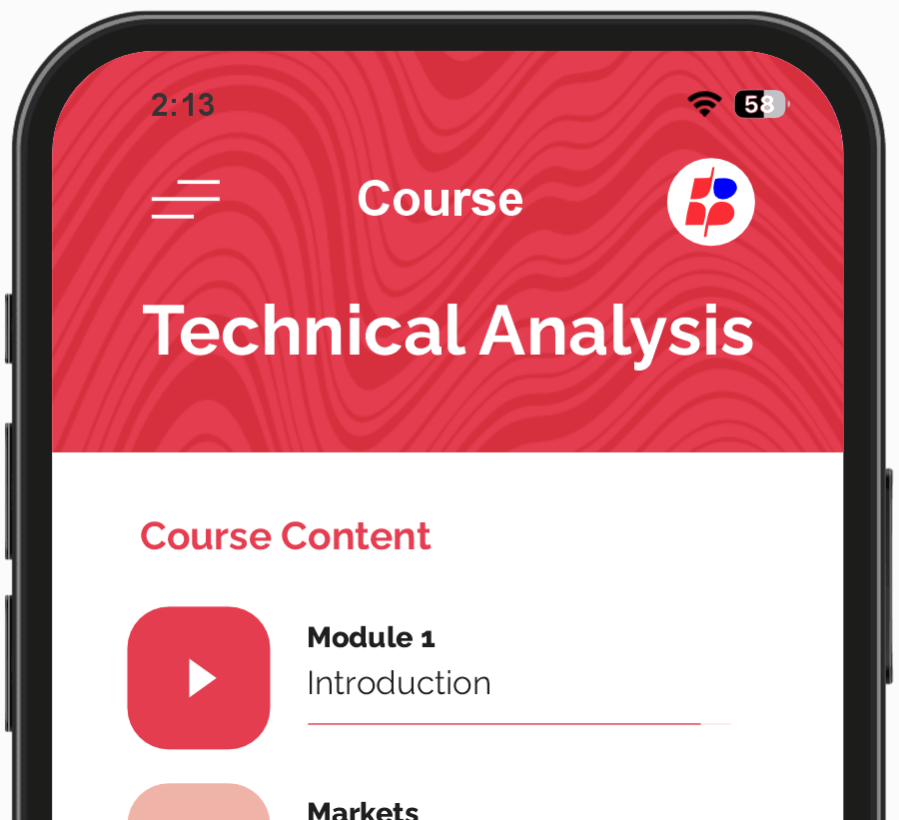Have you at any time thought of why volatile Forex pairs are perfect for pay trading without getting that answer you desire?
Well, today is the day for that clarity you so desired. You will get to find out that answer and even much more as you read further.
Forex trading, a global marketplace where currencies are exchanged, provides countless opportunities for profit, especially when dealing with volatile currency pairs.
Volatile forex pairs are those that experience significant price fluctuations within short periods.
These fluctuations make them ideal for “pay trading” strategies, where traders capitalize on quick, substantial movements for profit.
In This Post
Volatility in Forex Trading
Volatility in forex refers to the extent to which a currency pair’s value fluctuates over a certain period.
High volatility means that prices move rapidly, either upwards or downwards, presenting increased opportunities for both profit and loss.
Volatile currency pairs are often influenced by geopolitical events, economic indicators, or market sentiment, which can cause rapid price changes.
High volatility can be challenging for long-term investors who seek stability, but it’s beneficial for pay traders who thrive on these price swings.
With the potential for rapid gains (and losses), volatile forex pairs provide a rich ground for short-term strategies.
Why Volatile Forex Pairs are Perfect for Pay Trading
Pay trading typically involves executing high-frequency, short-term trades that capitalize on swift price movements. Here are several reasons why volatile forex pairs are suitable for this type of trading:
1. Frequent Opportunities
With frequent price movements, traders have numerous entry and exit points. This allows pay traders to profit from small but frequent trades throughout the day.
2. Potential for High Returns
High volatility can translate into significant gains in a short time frame. The right timing allows traders to capture profitable moves within minutes or hours, leveraging price swings for enhanced returns.
3. Increased Liquidity
Volatile currency pairs tend to be heavily traded, which ensures high liquidity. This means trades are executed quickly, minimizing slippage and reducing the cost of entry and exit.
4. Adaptability with Short-Term Strategies
High volatility aligns with various short-term strategies like scalping and day trading. These strategies require rapid price changes to yield profits, and volatile pairs fulfill this need well.
Strategies for Pay Trading Volatile Forex Pairs
To effectively navigate the world of volatile forex pairs, traders should employ strategies that capitalize on quick price changes. Here are some effective methods:
1. Scalping
Scalping involves making numerous trades throughout the day to accumulate small gains.
This strategy works well with volatile pairs because scalpers profit from brief price movements, often holding positions for seconds or minutes.
Key to scalping is quick decision-making and low transaction costs, both of which align with volatile pairs.
2. Range Trading
Range trading focuses on identifying support and resistance levels within which the price oscillates.
In high-volatility pairs, prices often return to these levels after sudden spikes, allowing traders to buy at support and sell at resistance, or vice versa.
Range trading works well when the market lacks a clear trend but exhibits high volatility.
3. Breakout Trading
Breakout trading involves entering trades as prices break out from established support or resistance levels. Since volatile pairs are prone to rapid moves, breakouts are frequent, providing profitable opportunities.
A successful breakout trade often leads to significant gains, as price continues in the direction of the breakout.
4. Momentum Trading
Momentum trading focuses on following the strength of price movements. In highly volatile markets, a strong movement in either direction is often sustained for a short while, allowing momentum traders to “ride the wave.” Indicators like the Relative Strength Index (RSI) and Moving Averages can help identify and confirm momentum trades.
Most Volatile Forex Pairs to Consider
Several forex pairs are well-known for their high volatility, making them ideal candidates for pay trading:
1. GBP/JPY (British Pound / Japanese Yen)
Known as one of the most volatile pairs, GBP/JPY can experience rapid price changes due to economic news from the UK and Japan. Political developments in either country can also trigger sharp moves.
2. EUR/JPY (Euro / Japanese Yen)
Another highly volatile pair, the EUR/JPY is influenced by European and Japanese economic factors. Its sensitivity to global market sentiment often results in quick price movements.
3. USD/TRY (US Dollar / Turkish Lira)
The USD/TRY pair is subject to extreme volatility due to Turkey’s economic and political landscape. This pair is often influenced by currency intervention and inflationary pressures.
4. GBP/NZD (British Pound / New Zealand Dollar)
Influenced by New Zealand’s commodity exports and UK economic conditions, GBP/NZD can be highly volatile, especially during market hours in both regions.
5. AUD/JPY (Australian Dollar / Japanese Yen)
The AUD/JPY pair is influenced by global commodity markets and Japan’s monetary policy, leading to regular volatility and making it a popular choice for pay traders.
Risks of Pay Trading with Volatile Forex Pairs
While trading volatile forex pairs offers lucrative opportunities, it also presents risks. Here are some common challenges associated with pay trading in volatile markets:
1. High Risk of Loss
Just as there is a potential for quick profits, there is also a high risk of rapid losses. If a trade moves against a trader’s position, losses can accumulate swiftly.
2. Slippage and Execution Issues
Volatile markets can lead to slippage, where trades are executed at a different price than expected. This can affect profitability, especially when using strategies that depend on precise entry and exit points.
3. Psychological Pressure
The rapid pace of volatile pairs can lead to stress, as traders need to make quick decisions. Emotional reactions can cause traders to deviate from their plan, leading to poor outcomes.
4. Increased Spread Costs
Spreads can widen during volatile times, leading to higher transaction costs. This affects scalping and high-frequency trading strategies the most, as they depend on narrow spreads to remain profitable.
Risk Management Techniques for Pay Trading
To manage these risks, it is crucial to implement sound risk management techniques when trading volatile forex pairs:
1. Use Stop-Loss Orders
Stop-loss orders help limit losses by automatically closing a position when the price reaches a predetermined level. This is especially useful in volatile pairs, where price can move against the trader quickly.
2. Position Sizing
Adjusting position sizes based on volatility can reduce risk. For instance, taking smaller positions on highly volatile pairs ensures that potential losses are limited even if the market moves against the trade.
3. Avoid Over-Leveraging
High volatility combined with excessive leverage can lead to catastrophic losses. Keeping leverage low ensures that losses remain manageable and allows for sustained participation in the market.
4. Set Realistic Profit Targets
While volatile pairs offer high returns, setting realistic profit targets prevents traders from holding positions too long and risking a reversal. For example, pay traders may set small but achievable profit targets and exit once those are met.
Frequently Asked Questions
1. What is the best time to trade volatile forex pairs?
The best time to trade volatile forex pairs typically aligns with overlapping trading sessions, such as the London and New York sessions, as these periods see the highest trading volume and liquidity.
Pairs like GBP/JPY, EUR/USD, and AUD/JPY are often most active during these hours. Additionally, traders should be mindful of major economic news releases for both the currencies in a pair, as these events tend to trigger high volatility.
2. How can I identify if a forex pair is currently experiencing high volatility?
To gauge current volatility, traders can use volatility indicators like the Average True Range (ATR) or Bollinger Bands, which expand during periods of high volatility.
Additionally, following economic calendars to monitor upcoming events, such as central bank announcements or major economic reports, can signal when a forex pair might experience higher-than-normal volatility.
3. Are there any automated tools to help trade volatile forex pairs?
Yes, many traders use automated trading tools or Expert Advisors (EAs) for volatile forex pairs.
These tools are often programmed with specific entry and exit rules designed for high-volatility conditions.
For instance, some EAs are tailored for scalping or breakout strategies, allowing trades to be executed rapidly and without emotional interference.
However, automated tools should be used with caution and regularly monitored to ensure they align with current market conditions.
4. Can beginners profit from trading volatile forex pairs?
While trading volatile forex pairs can be profitable, it can also be risky, especially for beginners.
Beginners may benefit from starting with demo accounts to practice with volatile pairs and gain experience with different strategies.
It’s also advisable for new traders to limit leverage and focus on strict risk management to mitigate potential losses.
Additionally, beginners should consider pairing volatile trades with less volatile currency pairs to balance their portfolios and reduce exposure to large market swings.
Conclusion
Volatile forex pairs are a prime choice for pay trading due to their frequent price swings and high liquidity.
They offer numerous opportunities to capitalize on short-term price movements, making strategies like scalping, range trading, and breakout trading highly effective.
However, the risks associated with volatility should not be underestimated, as rapid price changes can lead to swift losses.
Implementing risk management practices such as stop-loss orders, proper position sizing, and avoiding over-leverage can help traders navigate these challenges and achieve consistent profits.
In conclusion, the world of pay trading benefits significantly from volatile forex pairs.
With disciplined strategy implementation and rigorous risk management, traders can harness the power of volatility to realize substantial gains in the dynamic forex market.




